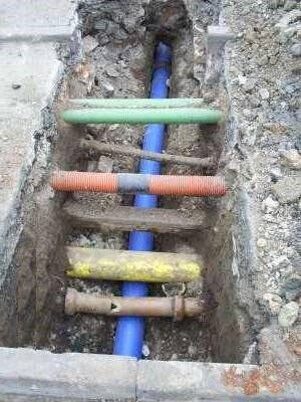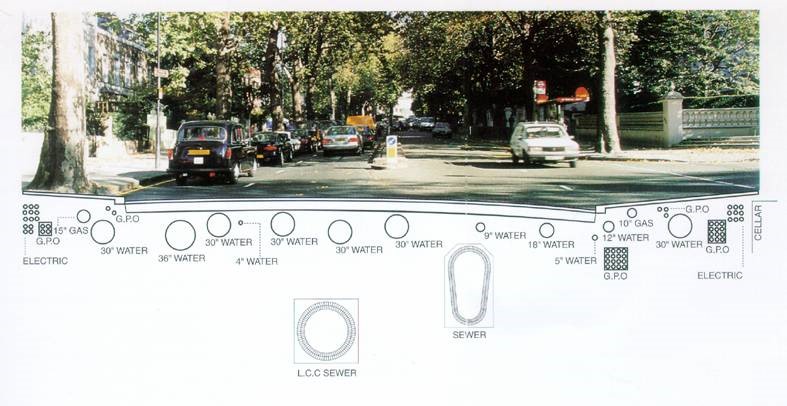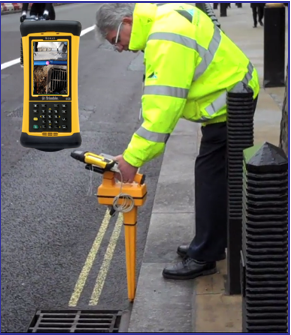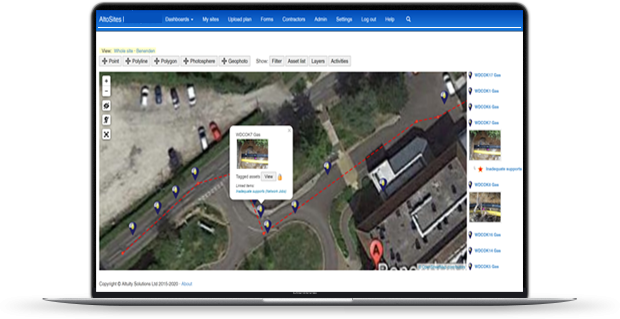More than 4 million excavations take place on UK roads each year with approximately 60,000 utility strikes occurring annually in the UK alone contrasted with 500,000 in the USA.
These excavations are from essential work by asset owners in laying and maintaining underground assets and buried services such as those for gas, electric, water and fibre optics cables.
There are huge direct, indirect and societal costs associated with accidental strikes. An average of £500 is typically quoted as a direct cost but the total ratio of indirect and societal costs to the direct cost of repair is 29:1 (1)
For 60,000 strikes this is a hit of £870m per year to the UK economy.
UK Damage Prevention survey benchmark results
A recent survey took place to assess the current state of play. The “UK Damage prevention benchmark survey” commissioned by Street Works UK, JAG (UK), Geomatikk and supported by the Civil Engineering Contractors Association (CECA) published its findings in December 2020 (2)
This comprehensive survey found:
- The accuracy and completeness of records/maps showing the documented location of assets is a more important cause of risk and inefficiency than the lack of such records.
- There are widely diverging views between contractors and asset owners on the need for interaction in managing risk. Contractors emphasize the need for interaction much more than asset owners who don’t perceive this as a significant issue.
- The opportunity to update inaccurate records of underground asset location is not taken in most cases. 93% of asset owners say systems are in place to receive and correct records however only 17% of contractors believe this to be the case. They’re looking at the same problem through different lenses.
- The number of strikes to underground assets and buried services is more than currently perceived. It could be as high as 3.5% of excavations lead to a strike.
- A significant, but minority (between 6% – 11%), of strikes are still not reported to the asset owner or the Health and Safety Executive (HSE) even when required to do so.

Damage to underground assets is higher than thought?
The new survey indicates that 60,000 strikes may be too low and the actual rate is between 2% to 3.5%. Using 3.5% means the number of strikes is actually closer to 140,000 per year.

The above figures do not include the costs from dry digs. A dry dig is an excavation in the wrong location e.g. due to inaccurate plans or an inability to locate the buried service from a survey. Anywhere from 10-30% of digs undertaken can be dry digs. Better quality information would reduce the number of dry digs and their associated costs as well.
What could £2bn buy?
£2bn is such a large number it’s difficult to understand its significance but to help put it in context it’s enough for:
2,000 MRI scanners for the NHS
Or
more than the $2bn (£1.5bn) recent fund raising by the World Health Organisation
to start the provision of Covid vaccinations in 92 poorer countries.
Reducing damage to underground assets
This isn’t an insurmountable problem but neither is it a simple one.
- The benchmark survey highlights there’s a difference in perception of the scale of the problem between asset owners and contractors so they’re not equally motivated to find a solution.
- First mover advantage is actually disadvantageous because it involves costs being paid for by commercial organisations who may or may not directly benefit in the short term. For example, if a contractor includes costs for enhanced subsurface utility engineering (SUE) processes they’re likely to be at a competitive disadvantage when tendering for business.
- Only a minority of the costs are incurred by the operational teams within the asset owner and contractor organisations i.e. the direct costs. The indirect, and especially the societal costs, are incurred much more widely and as such are intangible to organisations. It’s a brave asset owner or contractor who does the right thing on their own.
These reasons highlight why there’s a role for government in helping to address these challenges. It can help introduce a level playing field and encourage (or mandate!) a consistent approach. This is why the National Underground Asset Register (NUAR) project, which is being led by the Geospatial Commission in the Cabinet Office, is helping to break the logjam. We’ve already seen the long-established Vault system in Scotland make progress and it’s hoped that the same could happen across the rest of the UK.
The potential level of unreported strikes between 6% – 11% is also of concern and needs further investigation as to why these go unreported when in some cases it’s a requirement under Health and Safety legislation to do so. There may be lessons to be learned from these strikes which are being missed.
No-fault reporting of damage to underground utilities
Could an aviation-style, anonymous, no faults reporting system partially help?
In aviation pilots can report completely confidentially issues or potential issues that they’ve faced. This ultimately helps keep aviation safer than it would otherwise be as problems can be addressed rather than buried – an apt metaphor you might think!
This would enable anybody to report a strike anonymously removing any worry of legal, commercial or brand impact. The benefit to the industry would be greater transparency in what led up to a strike; the strike itself and the ramifications of it. By pooling these reports we could get a better picture on causes whether they’re technical, skills or human behaviour-led.
Solving the data challenges
We need software solutions which can:
- Improve the ability to easily and efficiently record underground asset location data on-site including updating inaccurate or missing asset data and unidentified buried objects.
- Provide 24×7 access to data on and off site.
- Improve data feedback loops between asset owners and contractors.
- Improve the transparency of available data.
- Work in an open technical ecosystem to allow organisations to use systems which are best for their purposes while encouraging controlled access to data whether directly or via APIs.
Discover how AltoSUE is helping to tackle these challenges.
1: Cost estimation of utility strikes: towards proactive management of street works
Authors:
Lewis O Makana, MEng (Hons), PhD, GMICE Nicole Metje, Dipl. Eng, PhD, MASCE, MCInstCES, FHEA Ian Jefferson, BEng (Hons), DIS, PhD, FGS Margaret Sackey, CEng, MICE, CMIOSH, FMAPS, MIIAI, MCMI Chris D F Rogers, Eur Ing, BSc, PhD, CEng, MICE, MIHT, June 2020
2: UK Damage prevention benchmarking study, December 2020 is available at https://geomatikk.com/downloads/



